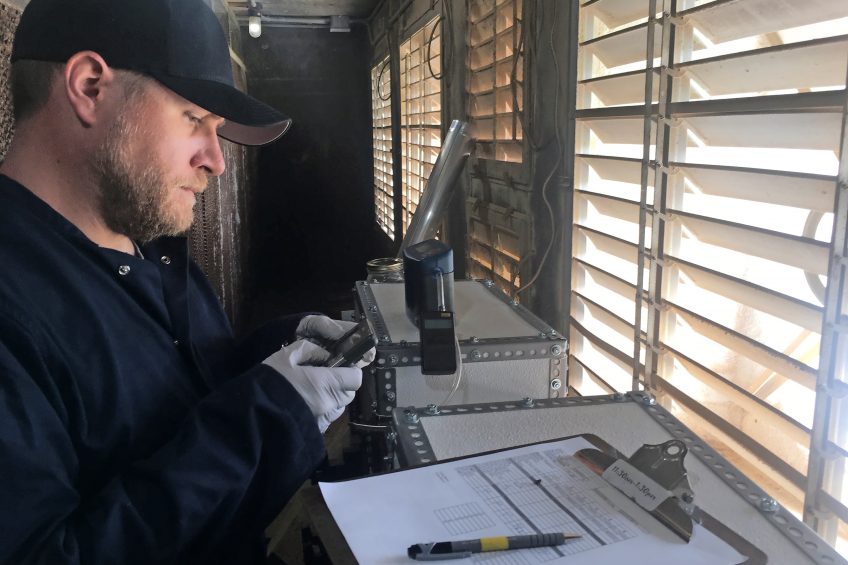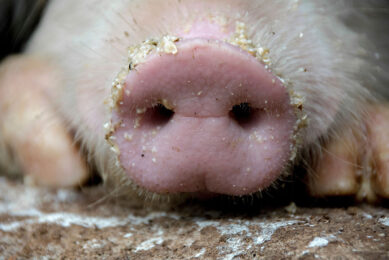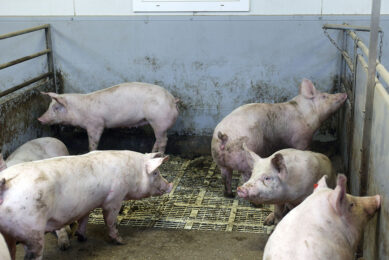Using black light to neutralise swine farm odours

Black light might help to neutralise volatile components coming from livestock barns, US researchers have found.
The research was carried out by a team around Jacek Koziel, an associate professor of agricultural and biosystems engineering at Iowa State University. They reported about their study in the scientific journal Atmosphere. Shined on surfaces coated with a thin layer of titanium dioxide, the black light initiates photo-catalytic reactions that have been found to significantly reduce several odourous chemicals that are found downwind of livestock operations.
The paper described the work in the lab that led to a test in an Iowa swine facility. The paper documented odour reductions from 40-100%.
Studying livestock odour and air quality issues
Prof Koziel has been studying livestock odour and air quality issues since joining the university in 2004. About 10 years ago he tested using ultraviolet (UV) light to breakdown compounds that are typically found in swine and poultry odours.
“We have shown that generic UV light works very well, up to a 100% reduction, of these key gases,” he said in a press release on the university’s website.
Project to using black light
About 2 years ago the Indiana Soybean Alliance funded a project to look at the use of black light, a milder version of UV light that is closer to visible light. Being less toxic, the black lights would mean fewer concerns about using it in the presence of the livestock and people working in the facilities.
Prof Koziel said a new type of the titanium dioxide, photo-catalytic coating compensates for the lack of UV energy in the black lights. Titanium dioxide (TiO2) is a powdery substance that is used as a whitener in a variety of products, including toothpaste.
Dust prevalent in livestock facilities
The coating is made by the Pureti Group, which is the project’s industrial partner. Researchers found that the dust that is prevalent in livestock facilities and accumulates on surfaces doesn’t affect its effectiveness in the lab.
“The pilot-scale research project, which was just finished, decreased odour emissions by 16% while also reducing a key ‘signature’ gas responsible for the characteristic downwind odour emissions by 22%,” Prof Koziel said. “An unexpected result was a 9% reduction in nitrous oxide, a major greenhouse gas.”

Prof Koziel’s team plans for the next stage of research where the black light will be directed on the ceilings and upper portions of walls, coated with titanium dioxide coating, inside livestock buildings. A similar set-up was tested by a research group in Italy, he said, and that small-scale study, which used regular UV light, showed that the pigs had greater feed efficiency.
“If that holds true and can be replicated, that’s an awesome potential finding for swine industry,” he said.
Studying the system outside the laboratory
Prof Koziel is hopeful the tests in an actual swine facility in northeast Iowa will continue to be promising. It is necessary to study the system outside the lab because conditions, such as air movement, are highly variable in livestock facilities.
The paper in Atmosphere was authored by Wenda Zhu, Jacek A. Koziel and Devin L. Maurer, all attached to the Iowa State University, IA, United States.
 Beheer
Beheer








 WP Admin
WP Admin  Bewerk bericht
Bewerk bericht